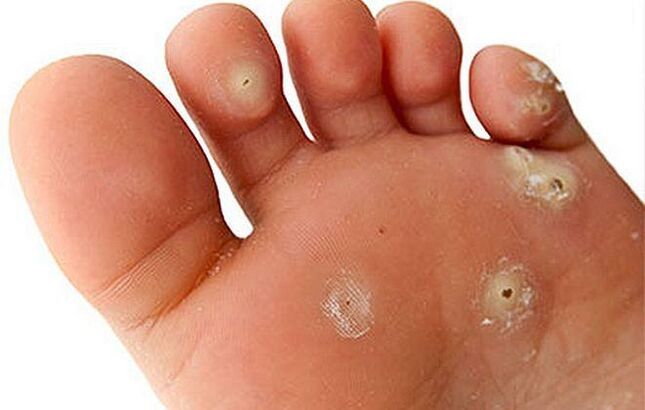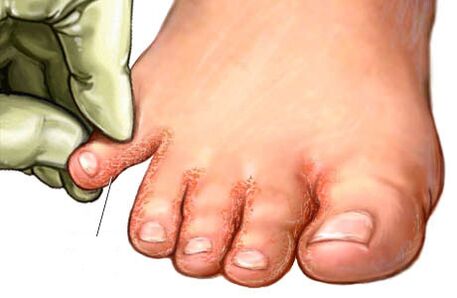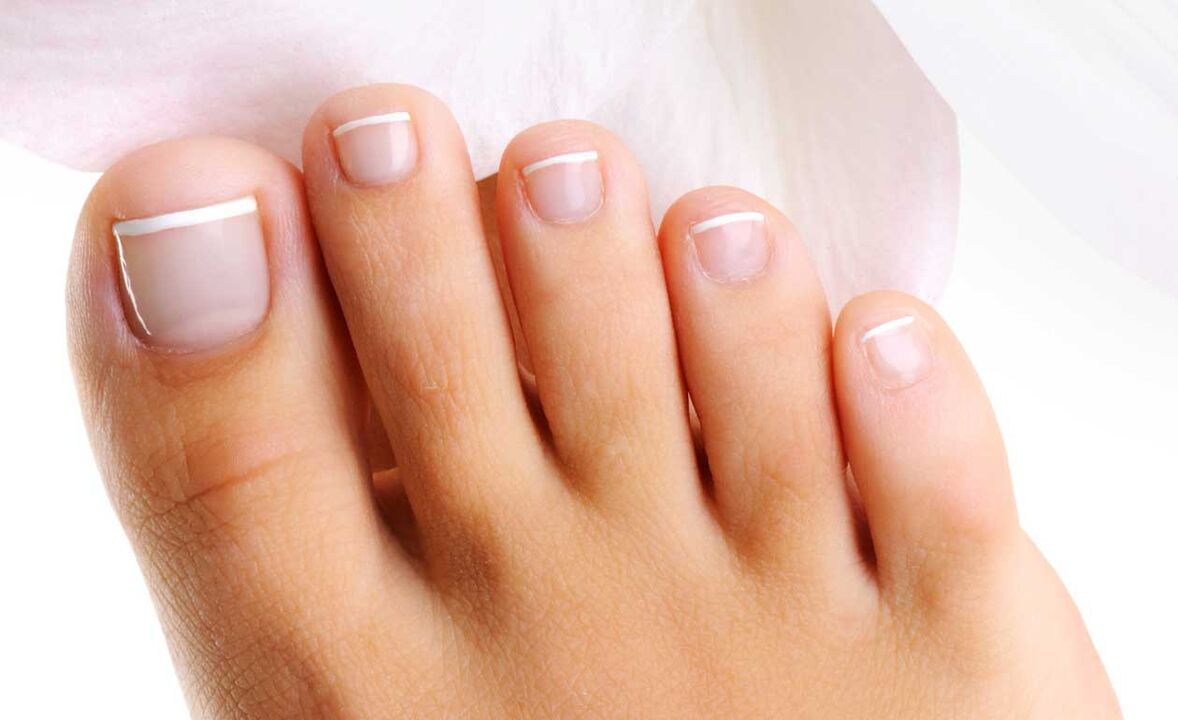Fungus on the feet is a seasonal disease and is mainly manifested in the season of wearing closed shoes. Fungal infections of the feet don't attract as much attention as other types of fungus like toenail fungus. This is because the foot is only visible when you look specifically at it. And the first, not strong, manifestations are attributed to everyday reasons.
The easiest way to test yourself for athlete's foot is to sniff your shoes! A bad smell is a sign of a fungal infection. It is true that the mushrooms themselves do not emit a smell, but their waste products. . . Plus the waste products of microorganisms that have settled in wounds caused by a fungal disease. And mostly these are staphylococci. All of this together causes unpleasant smells from shoes and feet.
Combing the skin on the affected area will spread an infection!
If the feet are in warm, closed shoes for a long time, they sweat profusely. The fungus, which is not activated under normal conditions, begins to actively develop in an ideal environment for itself. Hence the second name of this disease appeared - "athlete's foot". Fungal disease of the feet caused by different types of fungus. And since athletes spend most of their time in tight, closed shoes, they mostly suffer from this mycosis.
The athlete's foot is quite common. This causes a fungal infection of the soles of the feet or the areas of skin between the toes.
Such mycoses can be caused by the appearance on the foot of one of the varieties of a parasitic colony of an infectious and highly contagious disease called a fungus on the feet.
Fungal diseases that cause extensive skin lesions are provoked by various types of fungi, the nature of which is found out in the analysis of analyzes.

How does the fungus manifest itself?
On the skin of the legs, the pathology is initially manifested in small areas that are prone to peeling, then the stain spreads with uneven edges, and the mycosis becomes stronger.
The activity of the manifestation of fungal symptoms on the legs can be both lightning fast and quite sluggish. After all, it all depends on how strong a person's immunity is and on the type of microorganism that caused this disease.
The types of athlete's foot are very different and manifest themselves in their own way. But if a person has pathological changes in the feet, then from specialists you should find out what the reason is. Mycologists will explain what a fungus is and show you how to fight it.
What does athlete's foot look like?
Fungus of the feet is accompanied in most cases by "athlete's foot" - it looks like barely noticeable scaly skin. As the pathology spreads, the color of the skin changes to red and the changes become more noticeable. Furthermore, the disease of the feet looks like large areas with large flakes of dry skin, sometimes the signs are on one side, sometimes on both sides of the foot. The localization of the athlete's foot is usually at the lower end of the limb, and how the limb looks depends on the degree of development of the pathology.
Species differences such as:
- a very dense stratum corneum on the sole;
- Flakes begin to peel honey with your fingers;
- the skin is inflamed;
- The lesion on the feet also looks like blisters.
The fungus formed on the legs looks very expressive, so a person should notice certain manifestations and consult a doctor.

Causes of Athlete's Foot
What to do if a fungus appearsFirst of all, it is worth finding out the reasons for its occurrence and thinking about where exactly the spores could be picked up and why the body did not respond properly.
About the onset of foot formation in an athlete, about the reasons that precede the development of pathogenic flora, mycologists say the following: a fungus on the feet of the feet can develop if a person uses socks or shoes from an infected person, and also does not wear themSlippers in places where masses of people pass, namely in public baths, saunas and swimming pools, because this is where the most favorable soil for the bacterial front is.
How to identify mushrooms on the feet
The development of mycoses, a fungal disease, leads to a relatively high rate, and especially quickly such manifestations develop if at the same time there are chronic diseases. Diseases of the feet can be determined independently. However, in order not to confuse every skin abrasion with traces of fungus on the legs, you should carefully weigh the condition of the cover, as well as the appearance of the skin under the toes.
The fungus on the legs is very different in its symptoms, since the types of fungus on the legs are not limited to just one, and each of them has its own characteristic manifestation.

What does a fungus look like on the foot?
And what the skin fungus on the legs can look like determines what type it is. The mycelium leaves its "visiting card", so to speak, upon arrival.
Sometimes people with such a pathology do not even know about it, they just see a too dry blanket on their legs, but they think that it should be.
General symptoms usually look like this:
- the appearance of microcracks;
- slight itching, especially between the toes;
- strong peeling;
- sometimes swelling and pain in places where erosion occurs;
- rare, but bleeding does occur.
- Deep cracks can appear.
How to cure athlete's foot
Treatment of the fungus on the feet is a long process, but if the preparatory phase is carried out correctly, that is, if the diagnosis establishes which pathogen is parasitizing in the body, then therapy can be faster.
It is necessary to comprehensively treat skin fungi, using both internal and external medicinal pharmacological agents.
The athlete's foot can be treated with careful examination of all affected areas. Treatment should make this easier.
Consult mycologists for information on treating the fungus. You can talk in detail about what drugs are good at dealing with the disease.
The treatment of foot diseases can be broken down into several parts. An important overarching task is to strengthen the most vulnerable areas and rehabilitate the areas affected by the disease. It is important to know that feet must always be dry and clean:
- and shoes too should be made of materials that breathe;
- Cotton interchangeable socks should make a good absorbent that collects moisture.
- After the feet have been in shoes all day, they need to be thoroughly rinsed and lubricated with a special agent prescribed by a doctor.
It is also good to use special powders that will keep your feet dry.
The next part of treatment involves the use of antifungal drugs such as:
- Ointments with a special composition;
- a cream with a lighter texture than an ointment, that is, with a deeper angle of penetration inside;
- Aerosols, the smallest particles of which penetrate the most inaccessible places.
And although almost all pharmacological preparations for removing pathogens are sold in the pharmacy network without a special prescription, the consultation of an experienced specialist is not only not superfluous, but, on the contrary, helps to have a complex effect on this disease.
The most common reasons why the treatment does not have an effect are, first of all, a disturbed treatment regimen and the irregular use of funds.
There are also the following reasons:
- Many patients do not understand the severity of the disease and do not accept the proposed treatment.
- About a third of sufferers do not go to specialists at all and use self-medication from time to time, which, for obvious reasons, does not bring any relief.
- Many patients do not believe the need to accurately diagnose any type of pathogen.
- Many, as soon as the first positive results are seen, stop treatment on their own.
How is athlete's foot treated with folk remedies?
You can also treat fungi on the feet at home using folk remedies.
There is a good tool that you can make yourself.
Ointment that well destroys the mycosis of the feet:
- Vinegar essence - 110 grams;
- a raw egg;
- Butter - 200 grams (it is better to take natural farmers).
Peeling with absorbents from the kitchen shelf:
- Sparkling water;
- drunk coffee;
- ground oatmeal;
- Rice flour.
Such components, which are incorporated into the foam, can be excellent helpers in grinding the skin of the foot. They are great for exfoliating skin particles and removing unnecessary layers from the areas that need treatment.
Compressed with anesthetic solution.
A gauze compress is soaked in an anesthetic solution and strengthened on the leg at night. In the morning the bandage is removed and the affected areas are treated with a chamomile brew. Repeat for 7 days.
If you study the topic well, then the disease of the feet can be treated with folk remedies, and the fungus on the skin on the legs will pass without a trace and without the possibility of relapse.

Consequences of advanced mycosis of the skin of the legs
Treatment of skin fungus on the legs should be comprehensive and timely, otherwise the following complications may arise:
- The parasitic elements themselves, as well as the products that remain after their vital activity, increase the risk of allergies in patients.
- The course of dermatitis can be complicated by the appearance of eczema and psoriasis.
- Since the skin is badly injured, the infection freely penetrates the lower layers of the epidermis and triggers the onset of lymphostasis.
Warts are much more common on the athlete's foot and hyperkeratosis can form.
Precautions
Fungi of the feet or their occurrence can be prevented.
First, it is possible to use ointments and folk remedies as additional protection, and then the treatment of the fungus, even if it appears, is carried out according to a simplified scheme.
In addition, the following steps must be performed:
- eat as dictated by a healthy lifestyle;
- Observe hygiene procedures;
- Strengthening the body's immune defenses;
- Take precautionary measures.































